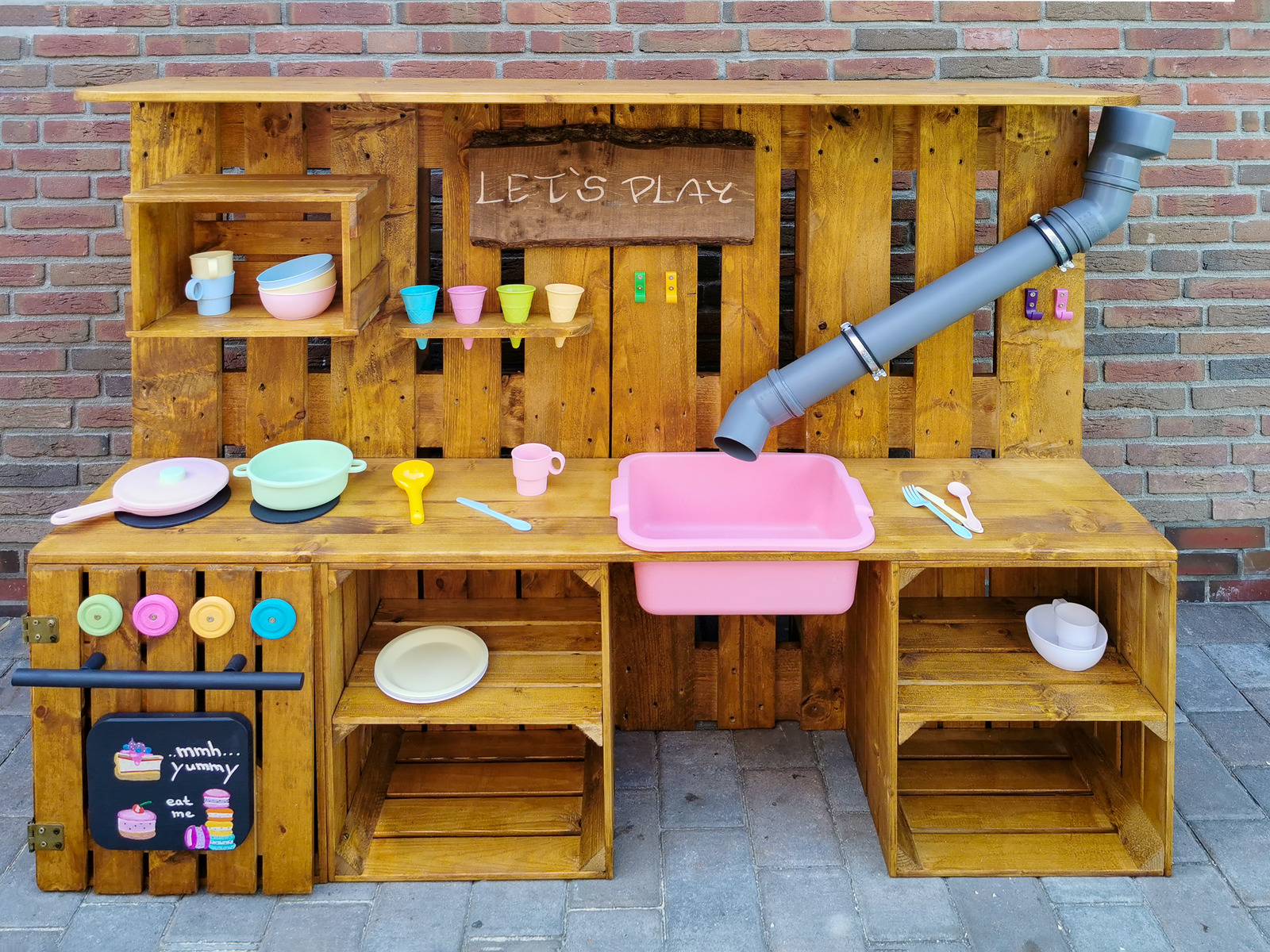Make a mud kitchen with pallets: DIY project and creative outdoor fun for big and small
When the weather is nice, there is nothing better for children than to play outside. A mud kitchen offers lots of outdoor fun and stimulates the little ones' imagination at the same time. And what's more, it's very easy to build a mud kitchen from pallets yourself, as Sari and Christian from the blog "Sari's Garage" show step by step in the video. The right stain is also important to protect the kitchen from the weather. The Wood&Metal Sprayer W 100 is a great help during application. With the right accessories and decoration ideas, the mud kitchen for the garden or balcony becomes a place full of fun and creativity for the children and at the same time a great DIY project for creative adult do-it-yourselfers!






